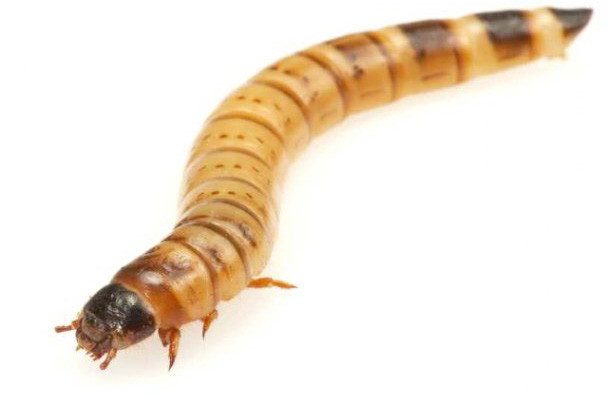DON at 8,000 µg doesn’t affect mealworms

Insects are champions in converting material into valuable protein. But what about the retention of mycotoxins that can possibly be present in the substrate used to grow the insects?
Insects, intended for animal feed and human food are often grown on wheat bran, but also on a substrate based on organic by-products. Both type of diets can be contaminated with mycotoxins.
So far, little is known about possible retention, sequestration, excretion and detoxification with mycotoxins by edible insects. A few earlier studies looked at the effect of fumonisin B1 on the growth and metabolism of Yellow mealworm. At a concentration of 450 µg/g diet, larval growth and metabolism was reduced. However, mortality was not increased. About 40% of the ingested fumonisin B1 was excreted through the faeces. Also other studies showed no adverse effect on mortality. This suggests that a mycotoxin infection can be present in the insect population and may go unnoticed by the insect producer.
Therefore, a study by Wageningen University and Research (led by Sarah van Broekhoven) was done to investigate the degradation and excretion of Deoxynivalenol (DON) in Yellow mealworm (Tenebrio molitor L.).
In this study, published in the World Mycotoxin Journal, T. molitor larvae were grown on wheat flour naturally contaminated with DON and DON-derivatives (4,900 µg/kg DON, see Table 1); wheat flour spiked with pure DON (8,000 µg/kg pure DON). Clean wheat flour served as the control diet. The focus of this study was that the larvae were used as human food source. But mealworms are also often used as protein alternative for animal feed.
Larvae were allowed to grow for two weeks, after which they were at harvest weight (>100 mg). It was shown that all three diets were consumed to a similar extent. The researchers showed that feeding on high concentrations of DON (up to 8,000 µg/kg) has no direct detrimental effects on T. molitor survival and weight gain (Table 2). Around 14% of DON ingested through naturally contaminated wheat flour was excreted with faeces. For DON-spiked wheat flour, this was around 41%. For both diets, the remaining fraction of DON could not be detected. This suggests that it was metabolised by T. molitor. Metabolites could be either sequestered or excreted with faeces. It is not known why a smaller proportion of DON was excreted after feeding on naturally contaminated wheat flour, compared to DON-spiked wheat flour.
According to the researchers, these are promising results with respect to food safety. However, the remaining portion of the mycotoxins is likely metabolised into different compounds. Further studies should focus on enzymatic degradation of DON and other Fusarium mycotoxins in T. molitor, as well as the possible toxicity of the resulting DON metabolites to animal and human consumers.
Top three articles on mealworms for fish feed:
• Mealworm meal for European sea bass











